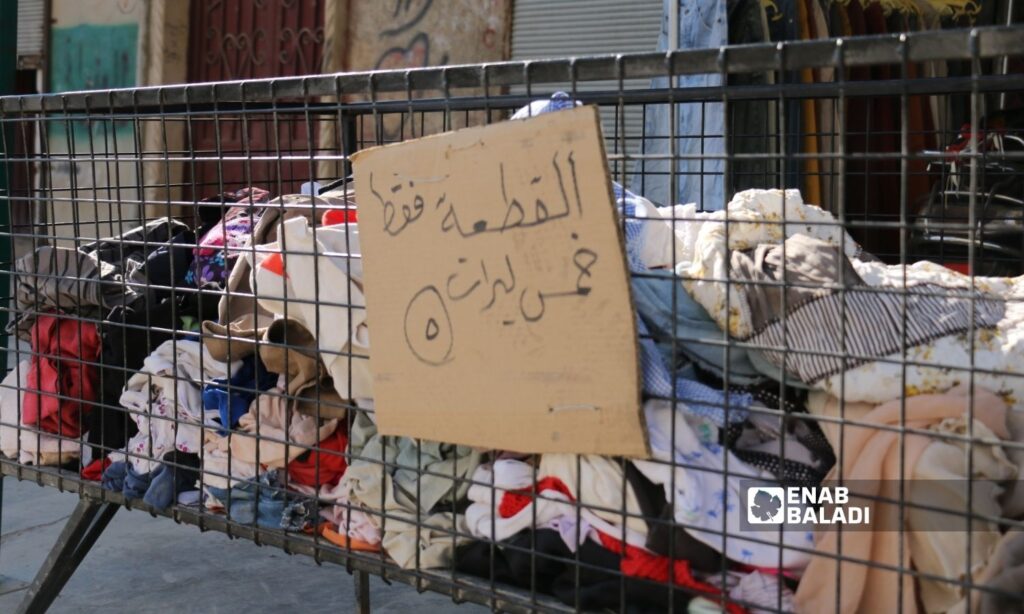Azaz – Dayan Junpaz
Before the winter season, Tuqa al-Saeed, 38, visits the second-hand clothing store in the border city of Azaz in the northern countryside of Aleppo in search of clothes and shoes that provide some warmth for her children.
Al-Saeed relies on the financial returns from her work on the sewing machine to pay the rent for her house, provide her children with their basic needs, and make up for the absence of their father, who was forcibly disappeared years ago, according to what she told Enab Baladi.
Many of them resort to buying second-hand clothes and shoes in light of the gap between the monthly income of the people of northwestern Syria and the cost of living.
A haven for the people
“For the price of a piece in new clothing stores, I buy three pieces in used clothes and shops,” says Tuqa, adding that she previously had to borrow to buy clothes for her and her children.
The quality of used clothes is no different from that of new ones, while the price difference significantly impacts the lives of low-income people, according to Tuqa.
Mohammad Malish, 30, who was displaced from Maarat al-Numan, agreed with Tuqa, who said that the prices of new clothes are about three times higher than the prices of used ones.
Enab Baladi observed that the new clothes markets in Azaz are witnessing a weak turnout, while the demand for second-hand clothing shops is increasing, especially with the approach of winter.
Hamza, 45, owner of a second-hand clothing store in Azaz, who declined to give his full name for social reasons, said that the demand for used clothes is increasing with the approach of winter.
The advent of winter coincides with the return of schools, which increases the financial burden on the parents, and increases the children’s need for clothes that are provided by used clothes markets at an acceptable price, according to Hamza.
Used clothes categories
Second-hand clothing merchants import their goods from Turkey, which are sold to shop owners after they are divided into categories according to their quality and purchase method.
The first category contains clothes that merchants buy by piece, while the demand increases for clothes of the second and third categories due to their lower prices compared to the first category, according to Hamza.
The price of the second type of used clothes is set according to their weight since the shop owners buy them in sealed bags without knowing what they contain. The store owners sell the damaged ones for uses other than wearing them, Hamza, who prefers to buy the second type, told Enab Baladi.
For his part, Azaz-based Mohammad Malish said that he relies on buying damaged second-hand clothing to light it and warm his children with it when he is unable to secure the means of heating.
The residents’ resort to used clothes is an attempt to preserve the minimum necessities of life in light of their inability to secure their basic needs due to the high prices of goods affected by the depreciation of the Turkish lira.
One-fifth of the IDPs in northern Aleppo, and about 28% in Idlib region, live critically under the minimum expenditure basket for survival, according to a report by the United Nations Office for the Coordination of Humanitarian Affairs (OCHA) issued last April.
The OCHA added that more than 75% of the residents and IDPs suffer from food insecurity in northwestern Syria.

